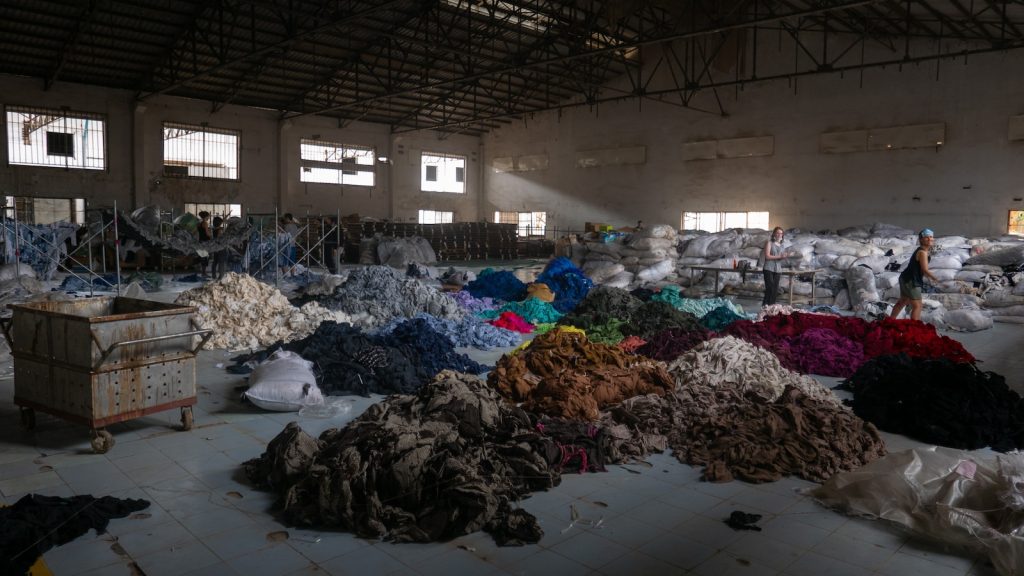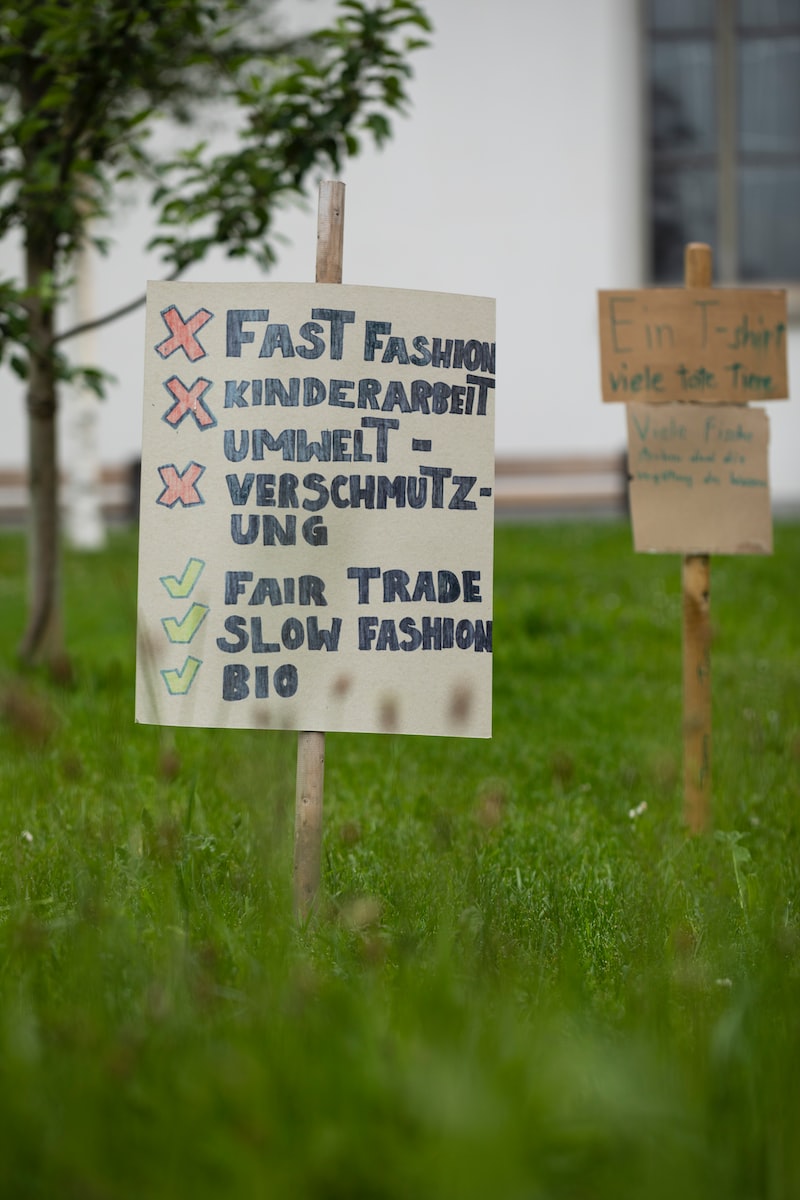Have you ever stopped to think about what happens to all those clothes you no longer wear or need? Most of us probably haven’t. We just toss them in the trash or donate them, assuming that someone else will find a use for them. But what happens to and what is the exact environmental impact of textile waste? Let’s take a closer look:
What is Textile Waste?

Textile waste refers to any material that is leftover or discarded during the production of textiles or at the end of their useful life. This can include everything from scraps of fabric to old clothes and household textiles. Sadly, textile waste is a significant issue that is only becoming worse.
Only a small portion of the estimated 92 million tons of textile waste produced each year worldwide is recycled or used for other purposes. The remainder is disposed of in landfills or burned, which increases greenhouse gas emissions and environmental degradation.
Textile waste is significantly influenced by the fast fashion sector. They buy more garments than they need and immediately toss them out because of the tendency toward inexpensive, disposable clothing. The pressure to keep up with constantly changing fashion trends has also led to a shorter lifespan of clothing items, resulting in a higher turnover rate and more waste.
The environmental impact of textile waste is significant. The production of textiles requires vast amounts of energy, water, and resources. When textile waste ends up in landfills, it can take hundreds of years to decompose, releasing harmful chemicals and greenhouse gases in the process.
5 Ways Textile Waste Impacts the Environment
Let’s take a look and see what are the exact effects of textile waste on the environment:
1. Landfill Overload
Used garments that we throw in the trash end up in landfills. The issue is that textiles take up a lot of room and are difficult to decompose. Landfills all across the world contain a large amount of textile waste.
Textile waste buildup in landfills can have detrimental effects on the environment. Waste management gets more difficult as landfills fill and may result in landfill fires and harmful leachate flow. They may harm neighboring ecosystems, contaminate the water and soil, and endanger the health of nearby communities.
Furthermore, textile waste also contributes to the emission of greenhouse gases. As textiles decompose in landfills, they release methane, a potent greenhouse gas that contributes to global warming and climate change. This effect can be especially significant considering the vast amounts of textile waste generated globally.
2. Water Pollution
The textile industry is one of the largest water consumers globally, and the production process involves a significant amount of water use. Water pollution may be made worse by the disposal of textile waste in landfills. The adjacent water sources become contaminated as a result of the textiles’ degradation, which releases dangerous chemicals and colors into the soil and groundwater.
Both human health and aquatic life may be negatively impacted by the contaminants emitted by textile waste in landfills. The chemicals and dyes have the potential to enter rivers, lakes, and seas, harming fish and other marine life, upsetting ecosystems, and ultimately harming human health via the food chain.
Furthermore, water pollution caused by textile waste can have severe consequences for communities that rely on nearby water sources for drinking and irrigation. Polluted water can cause illnesses, reduce crop yields, and make it difficult for communities to maintain their livelihoods.

3. Greenhouse Gas Emissions
Carbon dioxide emissions are significantly impacted by the buildup of textile waste in landfills. Methane, a strong greenhouse gas that contributes to climate change, is released as fabrics decompose. Methane is a significant greenhouse gas that contributes to climate change since it has the potential to warm the planet 28 times more than carbon dioxide.
A sizable amount of the world’s methane emissions are caused by the degradation of textiles in landfills. Depending on the type of textile, the circumstances in the landfill, and how long the textiles have been decomposing, different amounts of methane can be emitted from textile waste.
The impact of greenhouse gas emissions from textile waste is significant, and it exacerbates the problem of climate change. Climate change can have serious implications for global ecosystems, human health, and well-being. As temperatures rise, it can lead to more frequent and severe natural disasters, rising sea levels, and the spread of infectious diseases.
4. Chemical Usage
The textile industry is one of the largest consumers of chemicals globally, using various substances to produce fabrics and dyes. The release of these chemicals into the environment brought on by the disposal of textile waste in landfills, however, could have a negative influence on the soil and groundwater.
The chemicals used in the production of textiles are frequently dangerous and can have negative impacts on the environment as well as human health. When textile waste is placed in landfills, it can contaminate the soil, lowering its fertility and endangering the surrounding population’s health. In addition, when they affect groundwater supplies, the chemicals that seep from textile waste can harm the ecosystem and pose health risks.
There is an urgent need to address the consequences of chemical consumption from textile waste in landfills. We need to find strategies to limit our consumption of textiles while stepping up our efforts to recycle and repurpose textiles if we want to reduce the amount of textile waste that ends up in landfills. By doing this, we could help make the world more environmentally friendly in the future and reduce the negative consequences of chemical usage from textile waste.
5. Resource Depletion
The textile business is resource-intensive since it uses a lot of water, energy, and raw materials in the manufacturing of textiles. Nevertheless, we waste all of these materials when we discard textiles in landfills, which adds to the depletion of natural resources.
Large amounts of water, frequently obtained from freshwater sources that are already under stress, are needed for the manufacturing of textiles. Also, the energy needed to produce textiles is substantial and primarily comes from non-renewable sources, which increases carbon emissions and contributes to climate change.
Also, the ecology is greatly impacted by the raw materials used to manufacture textiles, such as cotton and synthetic fibers. For instance, the high volumes of pesticides and fertilizers needed for cotton cultivation can have a substantial influence on water quality and soil health.
An urgent problem that needs quick attention is the impact of textile waste on resource depletion. We need to find strategies to limit our consumption of textiles while stepping up our efforts to recycle and repurpose textiles if we want to reduce the amount of textile waste that ends up in landfills. By doing this, we may help create a more sustainable future and decrease the damage that textile waste causes to the depletion of resources.
Conclusion
In conclusion, textile waste is a burning environmental issue that we simply can’t ignore. It’s time we realize the impact it has on our planet; from landfill overload to water pollution, greenhouse gas emissions, chemical usage, and resource depletion, textile waste wreaks havoc in so many ways.
But here’s the thing, we can make a difference. We can rethink our approach to fashion and embrace sustainable alternatives. By limiting our consumption of textiles and embracing recycling and repurposing, we can turn the tide.
For more tips and tricks on how to live a more sustainable life, check out our magazine.











